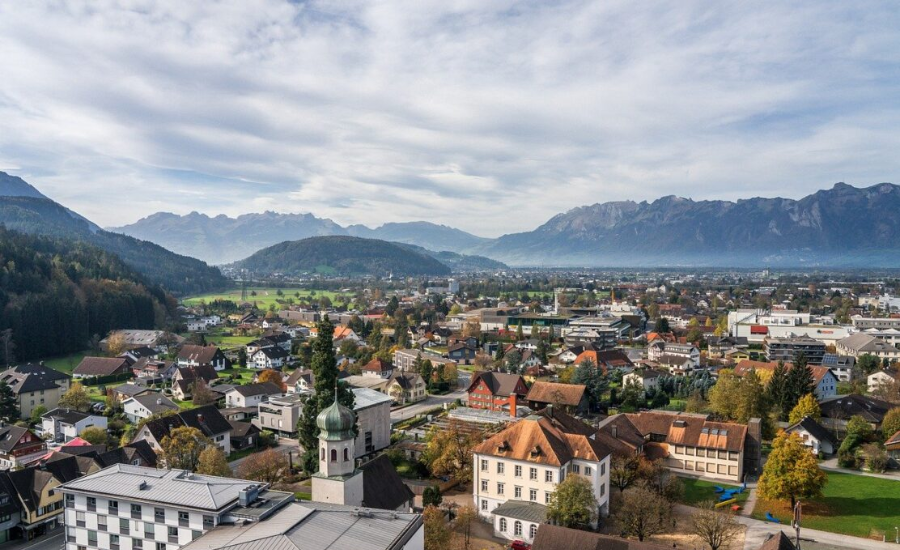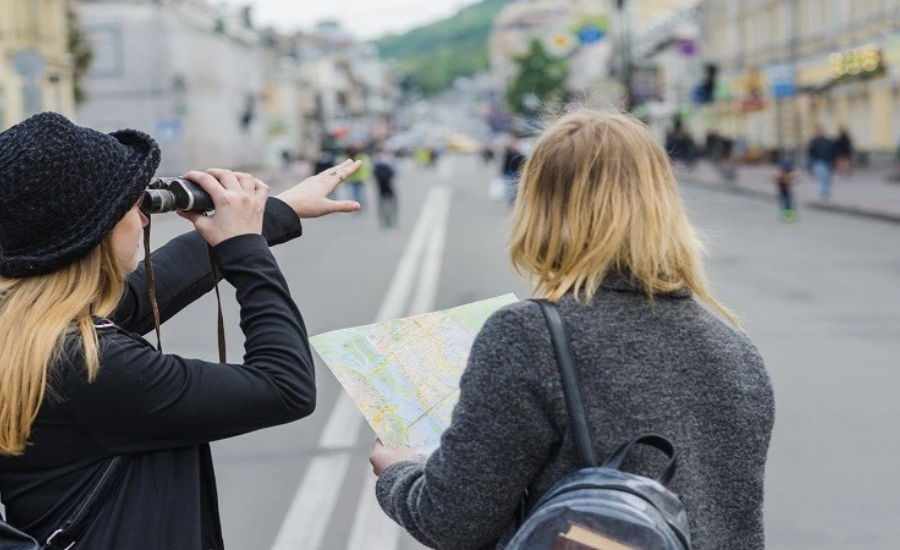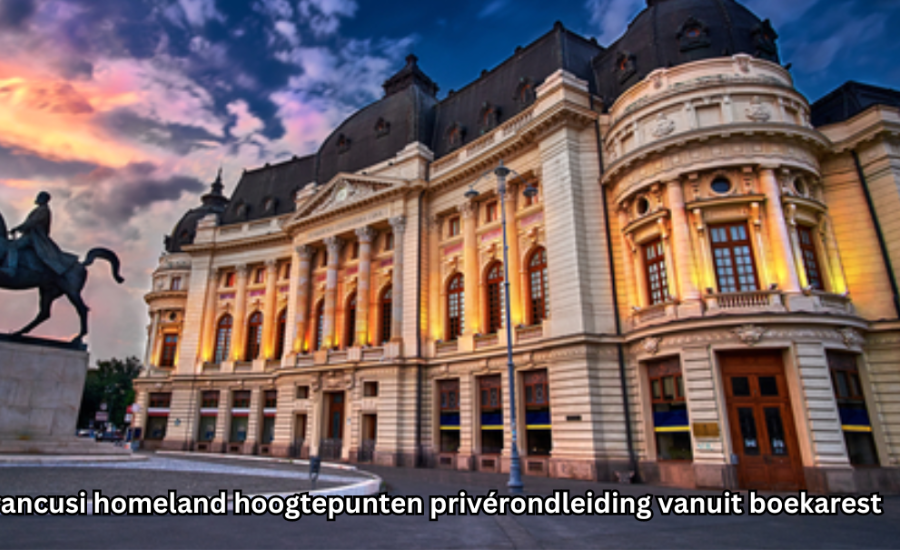Constantin Brancusi stands as a towering figure in the realm of modern art, celebrated for his revolutionary approach to sculpture and his distinctive focus on purity of form. His minimalist aesthetic and dedication to essence over detail have made his work timeless, securing his legacy as a true pioneer. To grasp the full scope of Brancusi’s genius, one must look beyond his art and delve into the rich cultural backdrop of his native Romania. This exclusive journey from Bucharest offers a unique opportunity to explore the scenic landscapes and vibrant traditions that deeply influenced Brancusi’s artistic vision. For art enthusiasts and curious travelers, this tour is a gateway to understanding the roots of one of modern art’s most transformative figures, promising an unforgettable experience that connects history, culture, and creativity.
Discovering Brancusi Homeland Hoogtepunten Privérondleiding Vanuit Boekarest,

Hobița Village: A Step Back in Time
Your private journey begins in Bucharest, and the first destination is Hobița Village, a charming and picturesque spot that holds a profound significance in the story of Constantin Brâncuși. Nestled amidst the gentle slopes of Gorj County, Hobița is more than just a rural village—it’s a living testament to the rustic simplicity and tranquil beauty that profoundly influenced Brâncuși’s early life and artistic philosophy. Here, the unadorned, traditional way of life offers a stark contrast to the bustling urban landscape of Bucharest, allowing visitors to reflect on the humble beginnings that shaped the mind of one of modern art’s greatest pioneers.
As you stroll through Hobița, the village unfolds like a canvas of traditional Romanian architecture, featuring wooden houses with intricate carvings and thatched roofs that echo the craftsmanship Brâncuși would later emulate in his minimalist sculptures. The rhythm of village life, marked by the quiet sounds of nature and the gentle hum of daily routines, provides a serene backdrop that mirrors the understated elegance found in Brâncuși’s work. Each corner of Hobița, with its pastoral charm and rich cultural heritage, reveals insights into the essence of Brâncuși’s vision, where simplicity and serenity are paramount.
Exploring The Reconstructed Childhood Home: A Window Into Brâncuși’s Formative Years
A highlight of your visit to Hobița is the exploration of the meticulously reconstructed childhood home of Brâncuși, now transformed into a museum dedicated to his early life and the roots of his creativity. This modest wooden house, surrounded by lush greenery and traditional Romanian dwellings, stands as a powerful symbol of the artist’s humble origins. Stepping inside, you’ll find yourself immersed in the simplicity that Brâncuși cherished—a simplicity that would become the cornerstone of his artistic expression.
The museum provides a rich narrative of Brâncuși’s formative years, offering glimpses into the everyday life that fueled his imagination. Exhibits include personal artifacts, photographs, and recreations of the tools and environment that he interacted with as a child. The setting evokes a deep connection to nature and tradition, both of which are reflected in his art’s organic forms and spiritual resonance. This reconstructed home is not just a tribute to Brâncuși’s beginnings; it is an invitation to experience the raw and unembellished beauty that he sought to immortalize in his sculptures.
Târgu Jiu: A Tribute in Stone to National Memory
Continuing the journey, you’ll travel to Târgu Jiu, a city that serves as a monumental gallery of Brâncuși’s mature work, highlighting his genius in creating art that resonates with national pride and collective memory. Târgu Jiu is renowned for hosting Brâncuși’s most significant public sculptures—an ensemble of monumental works dedicated to the Romanian soldiers who fought in World War I. This city embodies Brâncuși’s vision of art as a bridge between individual experience and communal legacy, blending creativity with deep emotional and historical significance.
The centerpiece of Târgu Jiu’s artistic heritage is Brâncuși’s sculptural ensemble, which includes the “Endless Column,” the “Table of Silence,” and the “Gate of the Kiss.” These works are not merely sculptures; they are enduring symbols of sacrifice, resilience, and the human spirit. Each piece reflects Brâncuși’s mastery in conveying profound themes through abstract forms—his minimalist approach stripped down to the very essence of expression, resonating with viewers on a visceral level.
Walking through Târgu Jiu, you are invited to engage with these sculptures not just as art, but as narrative pieces that encapsulate the courage and struggles of a nation. Brâncuși’s ability to blend form with function, and aesthetics with emotion, transforms the city into a living, breathing tribute to Romania’s history and its enduring cultural spirit. This leg of the tour is not just about witnessing art; it’s about connecting with a legacy that continues to inspire, challenge, and elevate the human experience.
The Cultural Treasures Of Brancusi Homeland Hoogtepunten Privérondleiding Vanuit Boekarest,
Bucharest, Romania’s lively capital, serves not only as the starting point but also as a key highlight of your journey through Brancusi’s homeland. This vibrant city, often described as the “Little Paris of the East,” is steeped in a rich tapestry of art, history, and architecture that provides a captivating backdrop to understanding the broader cultural context of Constantin Brâncuși’s life and work. The National Museum of Art of Romania, where some of Brâncuși’s pieces are displayed, offers a glimpse into the artist’s legacy and his profound impact on modern art. Beyond the museum walls, Bucharest’s eclectic architecture—ranging from grand Belle Époque buildings to stark communist-era structures—tells a complex story of resilience, adaptation, and cultural fusion.
Walking through the streets of Bucharest is like flipping through the pages of a history book, with each corner revealing layers of the city’s past and present. From bustling boulevards to hidden alleyways filled with local art galleries and coffee shops, the city is a place where tradition meets innovation. As you explore, you’ll encounter the contrasts that define Bucharest: grand palaces juxtaposed with modern skyscrapers, historic Orthodox churches standing next to avant-garde art installations. This blend of old and new creates an immersive experience that invites travelers to delve deeper into the cultural mosaic of Romania’s capital.
Savoring Romanian Hospitality And Culinary Delights
A journey through Brâncuși’s homeland is not just an exploration of art and history but also an invitation to experience the warmth and generosity of Romanian hospitality. The country’s culinary scene is a celebration of rich flavors and hearty dishes that reflect its diverse cultural influences. From savoring traditional meals like sarmale (stuffed cabbage rolls) and mămăligă (cornmeal porridge) to sampling local delicacies such as mici (grilled sausages) and papanasi (fried doughnuts with cheese and jam), each bite offers a taste of Romania’s soul.
Dining in Romania is not just about the food—it’s about the connections made at the table. Whether enjoying a meal in a rustic countryside inn or a cozy Bucharest bistro, visitors are often treated like family, with stories shared and traditions passed down through generations. The robust flavors of locally-produced wines and spirits, such as plum brandy (țuică), add an extra layer of warmth to these gatherings. Through these culinary experiences, travelers gain a deeper appreciation of Romania’s culture, where food and fellowship go hand in hand.
Embracing Romania’s Stunning Natural Landscapes
Romania’s natural beauty is as diverse as it is breathtaking, providing a perfect setting for those looking to connect with the landscapes that inspired Brâncuși’s artistry. From the rugged peaks of the Carpathian Mountains to the serene expanse of the Danube Delta, the country offers a stunning variety of environments that captivate the senses. Rolling hills dotted with quaint villages, lush forests teeming with wildlife, and picturesque vineyards are just a few of the scenic highlights that await travelers.
Whether you’re hiking along forested trails, exploring hidden caves, or simply soaking in the view from a mountain overlook, Romania’s landscapes provide a tranquil escape from the bustle of everyday life. These natural settings not only serve as inspiration but also as a space for reflection and creativity. Travelers are encouraged to bring their cameras or sketchbooks, capturing the essence of these beautiful surroundings just as Brâncuși did in his time. The serenity and majesty of Romania’s landscapes offer a rejuvenating experience, allowing visitors to connect with nature in its purest form.
Engaging with Local Artisans and Craftsmen
An integral part of exploring Brâncuși’s homeland is engaging with the local artisans and craftsmen who keep Romania’s rich heritage of traditional arts alive. Throughout the journey, travelers have the opportunity to meet these skilled individuals who dedicate their lives to preserving the crafts that have been passed down through generations. From intricate woodworking and pottery to vibrant textiles and handcrafted jewelry, these artisans embody the spirit of Romanian creativity and resilience.
Visiting workshops and studios, travelers can witness the meticulous process behind each craft, gaining insight into the dedication and passion that go into every piece. These interactions provide a deeper appreciation of the cultural influences that shaped Brâncuși’s minimalist style, as well as a chance to support local communities by purchasing handmade souvenirs. Each item carries a story, offering a tangible connection to Romania’s artistic legacy and a meaningful memento of your journey through this inspiring land.
Exploring The Cultural and Historical Roots of Brancusi Homeland Hoogtepunten Privérondleiding Vanuit Boekarest,

To fully appreciate the significance of the Brâncuși Homeland Highlights Private Tour from Bucharest, it’s essential to delve into the rich cultural and historical backdrop that shaped the artist’s visionary work. During Brâncuși’s formative years, Romania was a nation in flux, experiencing profound political and social transformations. These shifts, intertwined with the country’s deep-rooted folklore and the picturesque landscapes of his homeland, left an indelible mark on Brâncuși’s artistic vision.
Romanian Folklore And Its Influence
Romanian folklore plays a pivotal role in understanding Brâncuși’s artistic inspirations. His sculptures often echo the themes and motifs found in traditional Romanian legends, particularly those involving mythical creatures and symbolic animals. For example, his renowned “Bird in Space” series can be seen as a modern reimagining of the Maiastra, a legendary bird from Romanian mythology that represents freedom and spiritual enlightenment. By incorporating these folkloric elements into his work, Brâncuși bridged the gap between ancient legends and contemporary art, infusing his creations with both cultural significance and universal appeal.
Modernism and Artistic Innovation
Brâncuși was a leading figure in the modernist movement, yet his work defies easy classification. His sculptures are a blend of traditional Romanian themes and groundbreaking artistic experimentation, positioning him as a pioneer who transcended conventional boundaries. By merging the simplicity of folk art with innovative techniques, Brâncuși’s sculptures remain timeless, captivating audiences across the globe with their profound simplicity and emotional depth.
Practical Information For Your Tour

1. Getting There
The private tour typically begins in Bucharest, Romania’s bustling capital. Traveling from Bucharest to the Brâncuși homeland sites can take several hours, depending on your mode of transport. Most tours offer comfortable private transfers, ensuring a smooth and enjoyable journey.
- By Car: Driving to Brâncuși’s homeland allows for flexibility and the chance to explore the scenic Romanian countryside at your own pace.
- Guided Tours: Opting for a guided tour is highly recommended, as it provides expert commentary on Brâncuși’s life, his art, and the cultural significance of the locations you’ll visit.
2. Accommodation
Although the tour can be completed in a single day, some visitors choose to extend their stay in nearby towns or villages to fully immerse themselves in the region’s charm.
- Local Inns and Guesthouses: Cozy inns and guesthouses in the area offer traditional Romanian hospitality and authentic local cuisine.
- Boutique Hotels: For a more comfortable stay, boutique hotels in Târgu Jiu provide modern amenities while preserving a touch of historical elegance.
3. Best Time to Visit
The ideal times to explore Brâncuși’s homeland are during the spring and autumn, when the weather is pleasant and the natural beauty of the countryside is at its peak.
- Spring: Experience the vibrant colors of blooming flowers and lush greenery, creating a picturesque setting for your visit.
- Autumn: Enjoy the rich hues of fall foliage, perfect for photography and outdoor exploration amidst the stunning landscapes.
Cultural Etiquette and Tips
When visiting rural Romania and cultural sites associated with Brâncuși, it’s important to respect local customs and traditions.
- Respect for Sacred Sites: Many of the sculptures and locations on your tour are considered cultural treasures. Approach these sites with reverence and avoid behavior that could be perceived as disrespectful.
- Interactions with Locals: Romanian villagers are known for their hospitality. Being courteous and respectful in all interactions will enhance your experience. Learning a few basic Romanian phrases can also help bridge any communication gaps and show appreciation for the local culture.
Frequently Asked Questions
1. What can I expect from the Brâncuși Homeland Highlights Private Tour from Bucharest?
The tour offers a comprehensive exploration of Brâncuși’s early influences and the cultural landscape that shaped his artistry. Highlights include a visit to Hobița Village, the reconstructed childhood home of Brâncuși, and Târgu Jiu, known for its monumental sculptures. You’ll gain insights into Romanian folklore, modernist influences, and enjoy immersive experiences in local hospitality and natural beauty.
2. How long does the tour typically last?
The duration of the tour can vary based on your itinerary and travel preferences. Typically, the tour lasts a full day, but you may choose to extend your stay in the region for a more in-depth experience.
3. What is the best way to travel from Bucharest to the tour locations?
Most visitors opt for private transfers provided by the tour operator, ensuring a comfortable and hassle-free journey. Alternatively, renting a car allows for flexibility and the opportunity to enjoy scenic drives. Guided tours are also available for a more informative experience.
4. What types of accommodation are available near the tour sites?
You can choose from local inns and guesthouses offering traditional Romanian charm or boutique hotels in Târgu Jiu that blend modern amenities with historical elegance.
5. When is the best time to take the tour?
The best times to visit are during the spring and autumn months. Spring offers blooming flowers and lush landscapes, while autumn provides stunning fall colors ideal for photography and outdoor activities.
6. Are there any cultural etiquette tips I should be aware of?
Yes, it’s important to approach cultural and sacred sites with respect and to be courteous when interacting with locals. Learning a few basic Romanian phrases can enhance your experience and show appreciation for local traditions.
7. What should I bring with me on the tour?
Comfortable clothing and footwear for walking, a camera or sketchbook for capturing the landscapes, and any personal items you might need for a day trip are recommended. If you’re staying overnight, pack accordingly based on your accommodation choice.
Conclusion
The Brâncuși Homeland Highlights Private Tour from Bucharest offers a profound journey into the life and legacy of one of modern art’s most influential figures. By exploring Brâncuși’s childhood home, immersing yourself in Romanian folklore, and experiencing the country’s rich cultural and natural beauty, you gain a deeper appreciation for the artistic innovations that define Brâncuși’s work. From the vibrant cityscape of Bucharest to the serene landscapes of Hobița and Târgu Jiu, this tour provides a holistic view of the elements that shaped Brâncuși’s artistry. Whether you’re an art enthusiast or a curious traveler, this tour promises to be a memorable and enlightening experience.
Read Next: about-blogturbogeekorg
